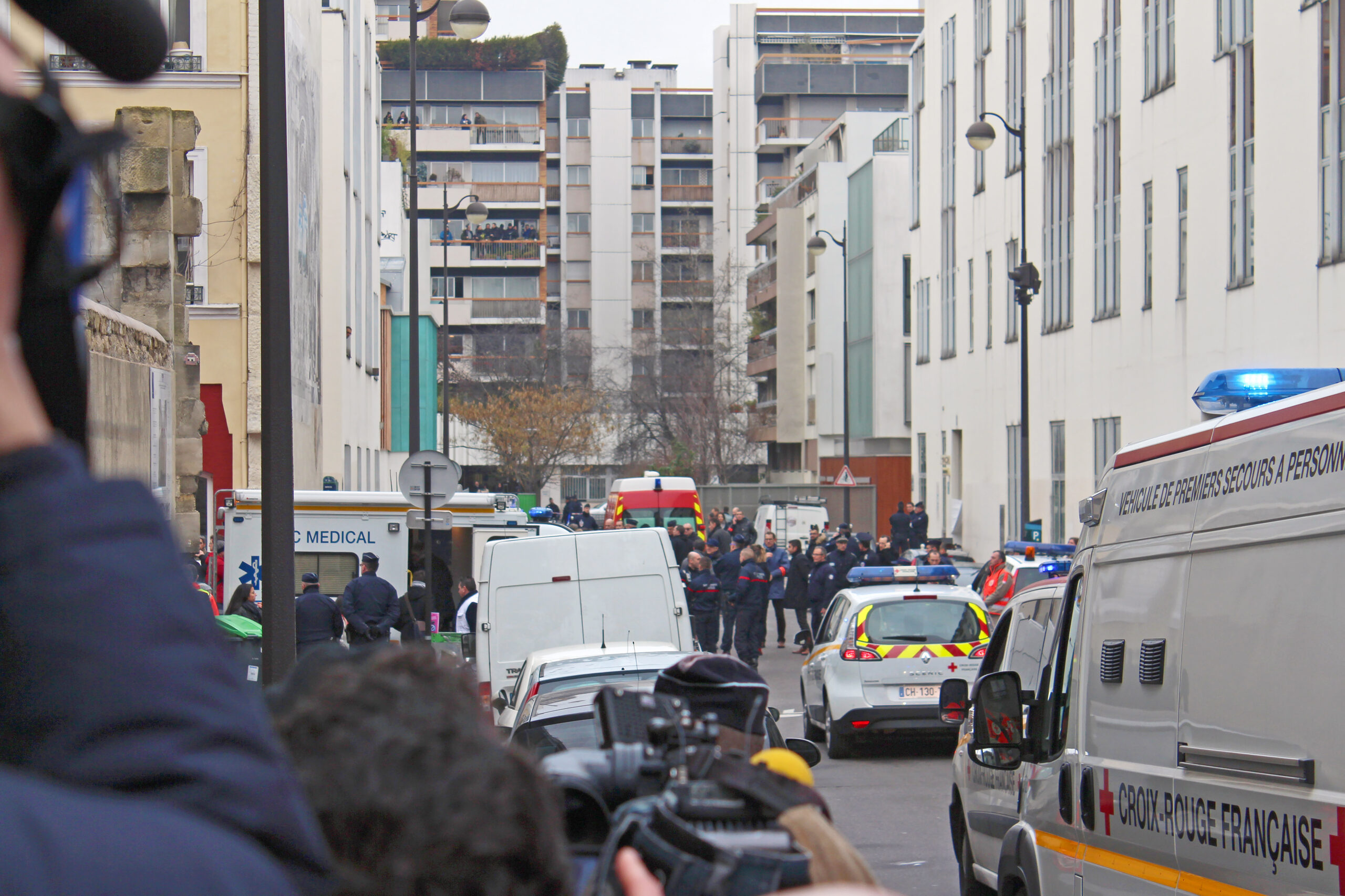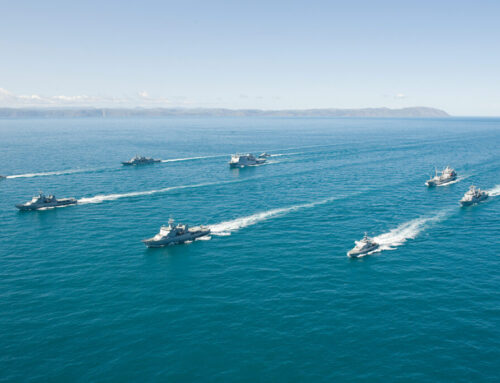Charlie-Hebdo-2015-11
Autor foto: Domena publiczna

A new Islamist offensive in the West?
February 19, 2015
Author: Tomasz Otłowski




Charlie-Hebdo-2015-11
Autor foto: Domena publiczna
A new Islamist offensive in the West?
Author: Tomasz Otłowski
Published: February 19, 2015
The Islamist terrorist attack that took place in Copenhagen on February 14, 2015 is the latest incident of this kind in a Western European country in recent months. Less than a month and a half after the bloody attack on the editorial staff of the satirical weekly Charlie Hebdo in Paris, the events in the Danish capital have again drawn the attention of the Western public to the problem of Islamic extremism and terrorism. It is worth noting that the attack in Paris was the deadliest incident of Islamic terrorism in Europe since the attacks in London in 2005. It served as a symbolic end to a decade of relative peace, during which the old continent had experienced only a few small-scale terrorist incidents involving Islamic radicals, such as Glasgow (2007), Stockholm (2010), and Frankfurt am Maine (2011).
Taking the Western world as a whole into consideration over the past six months, the recent attacks in Copenhagen and Paris are not isolated events. On the contrary, we can already talk about a whole series of similar acts of terrorism conducted by Islamic radicals in Western countries. It all started with the attack at the Jewish Museum in Brussels in May 2014, followed by the attacks in Ottawa (October 2014) and Sydney (December 2014). At the same time the intensification of Islamic extremism in Israel could also be observed, mainly in the form of so-called individual terror acts. In addition, many Western countries have experienced similar individual incidents in the last six months that were not officially classified as acts of terror. These incidents (e.g. in Dijon, where in December 2014 an immigrant from the Maghreb hit a group of eleven pedestrians in his car, shouting “Allahu Akbar”) were, in fact, intended to intimidate local communities, and generate an atmosphere of fear, so they bore all the features of a classic act of terror. Events of this type are part of a worrying trend of growing radicalization and brutalization of the so-called “normal” Muslims living in Western countries.
The Paris and Copenhagen attacks should be analyzed and considered within the wider context of the activation of the jihadist movement in Western countries. It is not only the attacks and bombings carried out effectively by Islamists that serve as manifestations of this increased activity, but also the number of terrorist operations that have been thwarted by the secret service of Western countries. According to unofficial reports, in Western Europe alone (mainly in the UK, Britain, France, Germany, Belgium, the Netherlands and the Scandinavian countries, i.e. the countries with large Muslims communities) dozens of jihadist terrorist plots have been prevented in the last six months. Moreover, in recent months, American secret services have prevented at least a dozen Islamists attacks in the U.S. The scale and size of these prevented jihadi operations in the West range from amateur preparations undertaken by Islamic “lone wolves”, to advanced organizational actions planned and prepared by the underground cells, often associated with international Islamist structures. Some of the biggest conspiracies to have been thwarted recently (January 2015) by Western authorities include a coup by the Islamic State’s cell in Brussels planned on the Belgium territory and advanced preparations for the attacks made by an unspecified structure of Islamic radicals in Germany. In the next few months one should expect further information about effective counter-terrorism operations by security services in different western countries.
The increased activity of Islamists in the West is part of a larger trend of noticeable intensification of jihadi groups’ activities and increase in the influence of radical Islam throughout the world. Although this process primarily refers to the countries and areas with large Muslim communities, an increase in the activities of Islamists has also been noticed in countries where Islam is in a significant minority. One of the major reasons for this state of affairs seems to be the establishment of the caliphate in June 2014, formed on the part of the territories of Syria and Iraq by an organization called the Islamic State (previously known as the Islamic State of Iraq and the Levant). Restoration of the caliphate – a “state” entity referring directly to the tradition, history and “clean” principles of the early days of Islam – has given a new surprisingly strong impetus for the development of the whole movement of jihad. Crowds of radical Muslims around the world have now gained a tangible reason for their fight in the name of their own religion. The previous fight in the name of ideas (“holy war”) has gained a new dimension, focusing on the specific territory governed by a particular political entity that realizes dreams and ideals of millions of the faithful. The spiritual and religious dimension of the existence of the caliphate propagated by the Islamic State and its impact on the attitude of a large part of the Muslims (including those who have lived in Western countries for generations) has unfortunately been completely underestimated by the West, which for decades followed the path of laity and secularization.
The escalation of Islamist activity in the West also has its source in the growing competition within the jihadist movement between the old guard, represented by Al-Qaeda, and the new generation, represented by the Islamic State and its caliphate. The IS, as a structure operationally more resilient and organizationally more effective, with greater financial resources and the one actually responsible for restoring the caliphate, has become more attractive also for the existing members and supporters of Al-Qaeda. This can be seen in the growing multitude of groups that have, until recently, closely cooperated with al-Qaeda, and which now fight under the banner of IS (including Boko Haram, Ansar al-Shari’a, the Islamic Movement of Uzbekistan, and part of the Pakistani Taliban structures).
Proof of the growing attraction of the IS may also be the establishment of the official “overseas” provinces of the caliphate in eastern Libya (the so called Wilayah Barqa) and in the Sinai, as well as clear signs of the presence of the Islamic State in Pakistan and Afghanistan, which had so far been unchallenged lairs of Al-Qaeda.
Organizational and political unrest has also been growing in the hub of the official branches of Al-Qaeda, such as AQAP (Al-Qaeda of the Arabian Peninsula) and AQIM (Al-Qaeda of the Islamic Maghreb). The latter had almost ceased to exist when in autumn of 2014 there was a split regarding the attitude of this group towards the Islamic State and the idea of the caliphate (a faction of fighters left AQIM and founded their own group, “Soldiers of the caliphate”, as a subsidiary of the caliphate). The establishment in September 2014 of a new regional branch of Al-Qaeda in the Indian subcontinent (AQIS) has not yet led to an improvement in the strategic position of the organization.
Regardless of the disputes between Al-Qaeda and the Islamic State (predominantly a personal rivalry between their leaders), the two organizations have continued in their efforts to increase their activity in Western countries. Interestingly, at the operational level there is often co-operation between people and structures that formally belong to the two competing groups. A good example of this cooperation was the activity of the Paris assassins: the Kouachi brothers, executioners of the attack on Charlie Hebdo, were connected to AQAP (which was officially confirmed in their message). In turn, Amedy Coulibaly, who attacked the kosher shop, acted as a member of the IS. The different affiliations of these extremists did not prevent them from collaborating within a single terrorist cell: together they planned and prepared their attacks, jointly bought the necessary weapons and equipment, finally they became martyrs dying in the course of the operation. It is worth remembering this pattern. In the near future it may be replicated in other places and circumstances.
Conclusions
- The killings in Paris and Copenhagen are a continuation of a series of Islamist attacks that have been observed in Western countries since the middle of 2014. The increase in the number of attacks is on the one hand the effect of the growing radicalization of an increasing number of Muslims living in the West, and on the other the result of the activity of people and structures associated in particular with the Islamic State, and trained mainly in the Middle East. One can also see more and more clearly that Caliph Ibrahim is the one who has the advantage in the battle for Muslims’ hearts and minds in the West. Already in the summer of 2014 he called for a holy war against the states involved in the fight against the caliphate. In January of 2015 a special IS cell was even established (the Brigade of Al-Awlaki), whose mission is to organize attacks on the West.
- The escalation of Islamist violence in the West is a confirmation of earlier concerns about the consequences of the existence and unhindered activities of the caliphate. The operationally and strategically ineffective war against the Islamic State, conducted by the international coalition since August 2014, gives the caliphate latitude to transfer parts of its operations beyond the immediate vicinity of international environment (e.g. to North Africa, South Asia and finally to the West).
- Organizationally, the attack in Copenhagen and an earlier similar attack in Paris are indeed a model example of the new modus operandi of Islamists, who are associated mainly with the IS. In contrast to Al-Qaeda, the Islamic State will focus on the number of attacks and their frequency, not the scale (measured by the large number of victims and the nature of the target). Jihadists of the caliphate openly call in their propaganda for just such a mass jihad, in which what counts is not the number of victims, so attractive to the media, but the speed and the number of individual attacks, carried out by small groups or even individual lone wolves of the holy war). This tactic, currently favored by Islamists, is very effective as it is difficult for the authorities to detect and prevent.
- The escalation of Islamist activity in the West will also have measurable political impact, particularly in Europe. The first sign of the political changes that resulted from an increase in the threat from radical Islam are grassroots social movements, such as HoGeSa and PEGIDA in Germany. Another part of the problem can be observed in many Western European countries where there has been an increase in support for parties and radical forces opposing the idea of multiculturalism in Europe and advocating the restriction of immigration and the revision of their rights. This problem is significant as in 2015 in many European countries, including those directly affected by the phenomenon of Islamic extremism (as the United Kingdom, Denmark, Spain, Switzerland and Portugal), there will be parliamentary elections. The escalation of Islamic terrorism in the West may have a significant impact on the results of these elections.
- Western countries should intensify efforts to eradicate the caliphate and weaken the Islamic State as the main sources of the current escalation of Islamic extremism. The current military operation led by the coalition forces does not stand a chance to meet this challenge. Therefore, modifying the strategy seems necessary. Changing the Western policy towards those forces and entities that have capacity of reducing the potential and actual impact of the caliphate, such as the authorities in Damascus and the Islamic Republic of Iran in the Middle East, is worth consideration in this context.
- Western countries need to improve the operation of its security forces in the prevention of terrorist threats, including a closer than before exchange of information and intelligence, both internal (between institutions) and international (within the existing international organizations). This is essential in the face of the new tactics increasingly being used by Islamists. In this context, it is particularly important to effectively monitor people travelling to the regions where organized Islamist structures operate, as well as those that return from there.
- In many Western countries immigration and assimilation policies need to be reviewed (in order to seal the system with regard to people with radical views). The existing regulations in this area clearly have not worked, and have contributed to the growing threat from Islamists. The attitude of the authorities and public services to all factors potentially extremist in nature require tightening up, such as the notorious Muslim “no-go zones” in many European cities, or the activity of the self-proclaimed “sharia police”.
Author: Tomasz Otłowski, Senior Fellow of the Casimir Pulaski Foundation





